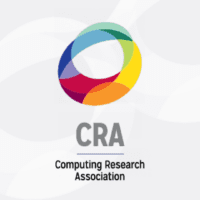The Trump Administration’s First Weeks in Office: Executive Orders, Other Actions, and Their Impact on the Computing Research Community
By Brian Mosley, Associate Director of Government Affairs
The first days of the new Trump Administration were marked by a series of executive orders and presidential actions, each with varying degrees of impact on the computing research community. On January 20, the administration’s inaugural day, President Trump issued multiple executive orders, nearly all fulfilling campaign promises made during the 2024 election. Over the following weeks, additional orders and directives followed.
Understanding Executive Orders (EOs)
Executive orders are directives issued by the president to manage the operations of the federal government, specifically the executive branch departments and agencies. These orders carry the force of law and remain in effect until they are rescinded by the issuing administration or a succeeding one, or they are deemed unconstitutional by the courts.
The administration’s initial executive orders covered a wide range of topics, including:
- Establishing the “Department of Government Efficiency”
- Instituting a federal hiring freeze and creating a new category of federal employees
- Ordering a review of all Biden Administration immigration policies
Each of these actions may affect the computing research community in both direct and indirect ways. We anticipate additional executive orders in the coming weeks.
At the same time, reports indicate that large-scale reductions in the federal workforce are planned, particularly at the National Science Foundation (NSF), where the administration is reportedly considering cutting 25% to 50% of its workforce and significantly reducing its budget. In response to these reports, CRA issued a statement on February 5, urging Congress to reject any proposed cuts to NSF.
Below are three executive orders or directives from President Trump that will directly impact the computing research community:
Funding Pause Memo
Late on January 27, the Trump Administration issued a memo titled “Temporary Pause of Agency Grant, Loan, and Other Financial Assistance Programs.” The order, issued by the Office of Management and Budget (OMB), required all federal agencies to “temporarily pause all activities related to the obligation or disbursement of all Federal financial assistance.” The stated purpose of this pause was to review agency programs and determine how best to align funding with the president’s priorities. The freeze was set to take effect at 5:00 pm ET on January 28 and remain in place until at least February 10.
The memo caused widespread confusion in Washington, D.C., and across the country, as it was unclear which programs were affected and for how long. The following day, the administration released a clarification memo to address the uncertainty. However, just before the 5:00 pm ET January 28 deadline, a federal judge in Washington, D.C., temporarily blocked the administration from enforcing the directive. Meanwhile, Congress applied intense pressure to halt the action, urging that “all federal resources be delivered in accordance with the law.”
By January 29, OMB rescinded the original order, though confusion persisted for several days. For instance, it was not until February 2 that the National Science Foundation (NSF) updated its Executive Order Implementation webpage, providing information on the court order, an FAQ explaining the situation, and a statement confirming that the NSF Award Cash Management Service (ACM$) system was available for awardees to request payments.
This funding pause is likely the first step in a broader effort by the Trump Administration to impound federal funds — a process in which the president withholds congressionally appropriated funds. While the U.S. Constitution mandates that the executive branch must execute spending as directed by Congress, the administration is challenging the legality of current impoundment laws. Though this particular attempt at funding control has failed, further efforts are expected.
Ending Federal DEI Programs
On January 22, President Trump issued the executive order “Ending Radical and Wasteful Government DEI Programs and Preferencing.” The order directs the OMB Director, in coordination with the U.S. Attorney General and the Office of Personnel Management (OPM) Director, to “coordinate the termination of all discriminatory programs, including illegal DEI and ‘diversity, equity, inclusion, and accessibility’ (DEIA) mandates, policies, programs, preferences, and activities in the federal government, under whatever name they appear.”
Within 60 days, every federal agency, department, and commission must eliminate:
- All DEI, DEIA, and environmental justice offices and positions, including Chief Diversity Officer roles.
- All equity action plans, initiatives, and related grants or contracts.
- All DEI or DEIA-related performance requirements for employees, contractors, or grantees.
Additionally, agencies must provide the White House with a comprehensive list of:
(A) Existing DEI, DEIA, and environmental justice positions, programs, and expenditures, including any that may have been rebranded since November 4, 2024.
(B) Federal contractors that have provided DEI training or materials to government employees.
(C) Federal grantees that have received funding for DEI, DEIA, or environmental justice programs since January 20, 2021.
There is a clear expectation that federal employees working in DEI offices will be reassigned or furloughed, with potential layoffs to follow. In effect, this order eliminates DEI initiatives within the federal government.
Revoking Biden’s AI Executive Order and Ordering a New AI Action Plan
Another significant order, “Initial Rescissions of Harmful Executive Orders and Actions,” revokes multiple executive orders issued under President Biden. The most impactful for the computing research community is the revocation of Executive Order 14110 (October 30, 2023), which governed the Safe, Secure, and Trustworthy Development and Use of Artificial Intelligence (AI EO).
The full consequences of this revocation remain uncertain. Some actions mandated by the original AI EO have already taken effect, but the status of key initiatives — including the NAIRR (National AI Research Resource) pilot project at NSF and the AI Safety Institute at NIST — is unclear. These programs enjoy strong bipartisan support in Congress and among tech industry leaders, and their potential termination could have significant unintended consequences.
Additionally, the order instructs the National Security Advisor to review all National Security Memos (NSMs) issued under Biden and recommend which should remain in force. This review may impact the National Security Memo on AI, further influencing AI policy in the U.S.
A few days later, President Trump issued a follow-up order: “Removing Barriers to American Leadership in Artificial Intelligence.” This directive instructs several high-level members of the administration, led by the Office of Science and Technology Policy, to develop a new AI action plan aimed at ensuring “America’s global AI dominance” within 180 days. The order also calls for a review of all actions taken under Biden’s AI EO to identify potential obstacles to achieving this goal.
Notably, the new directive makes no mention of the NAIRR pilot, FAAST, or the AI Safety Institute. These programs’ fates will likely be determined as part of the administration’s broader AI strategy.
Stay Informed and Engage
CRA is actively monitoring these developments and will continue to analyze how these executive orders impact the computing research community. We are in ongoing discussions with policymakers in Washington and will advocate for policies that sustain U.S. leadership in computing research. We strongly encourage members of our community to contact their Senators and Representatives to express how these executive actions affect research funding, workforce development, and innovation.
For the latest updates, visit the CRA Policy Blog.









